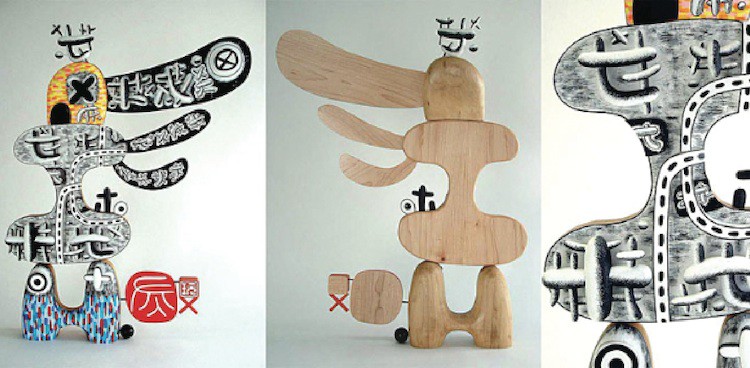
My brother, Eric, works in Brooklyn, out of an old store-front delicatessen. It’s a great space for him, with high ceilings, a big basement, and lots of natural light. He’s a sculptor, but people still stick their heads in from time to time, asking for sandwiches. To dissuade hungry passers-by, he puts paper up over the windows, but it keeps coming unstuck.
“What I should do,” he says, “is frost them. Thin a little nonfat yogurt with water. It stinks for the first couple weeks, but after that, it lasts forever.”
What?
Eric’s right, of course; milk paint works. In fact, it works very well; it’s one of the oldest types of paint on earth, and one of the longest-lasting. If you crack open an Egyptian tomb, you might find it daubed on the pharaoh’s tchotchkes. Along with egg tempera, it was the standard artist paint of the middle ages. Casein, as it’s properly called, remained popular for decoration through the mid-1800s, and it’s what gives Colonial furniture its soft color.
A farmer could make it himself. Curdle a pail of milk with vinegar, strain the curds, add a little lime or borax and some pigment, and you’re basically ready to go. Prepared properly, milk paint will keep for centuries. milk protein, once stripped of fat, is incredibly sticky.
“You know what they used to use to repair marble statues?” Eric asks. “Turpentine and Parmesan cheese.”
Technically, he’s wrong about the turpentine. At least according to the 1906 recipe:
“The rind is removed from old, skim-milk cheese, and the mass is rubbed with water and warmed until it furnishes a viscid mass like turpentine. This mixture is next incorporated to a plastic mass with a sufficient amount of powdered, slaked lime, in a warm mortar.”
If you’ve got some broken statuary, try it. According to the monk Theophilus (1100 AD), “the tablets of altars, fastened together with this glue, after they are dry, so adhere together, that neither heat nor humidity are able to disjoin them.”
Strong and waterproof, two words we don’t normally associate with cheddar. So why doesn’t Eric use cheese glue for his sculptures and milk paint for his pictures? Well, it’s fiddly to work with, and besides, he quips, “Have you smelled that stuff? Remember when I moved in?”
Oh, I remember. The place had been abandoned for a couple years when he took it over; the sandwich shop had gone under without really moving out, so we spent about a week clearing trash and scrubbing the floors. Still, there was an evil stink coming from the dead walk-in refrigerator at the back. When we finally excavated it, we found a shrine to the Blessed Virgin and a jug of milk, three years expired, giving off a weird, rotten reek. It must have been full when it was put there, because at the bottom was a three-finger-thick layer of hardened, white protein. Which is why he’s sticking with masking tape for the windows.



